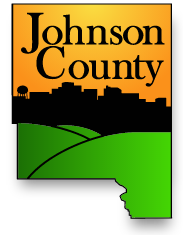Iowa City does not have a direct election for mayor. The City Council chooses the mayor from among the council members in January of even numbered years.
Iowa city have seven council members. All terms are four years. Four members are elected at large and may live anywhere in the city. Two at large members are elected every two years.
The other three members are elected by districts. Candidates for district seats must live in the district. The District A and C seats will be on the ballot in 2023. The District B seat was on the 2021 ballot and will be up again in 2025.
Iowa City voters will see their council district on their voter card under the label "Ward." No other Johnson County city elects its councils out of district or wards.
Council District for 2023-2031 Elections
Iowa City Precinct Map with districts
- Council District A
- Precinct 2
- Precinct 7
- Precinct 8
- Precinct 9
- Precinct 10
- Precinct 12
- Precinct 13
- Precinct 26
- Precinct 27
- Council District B
- Precinct 1
- Precinct 6
- Precinct 14
- Precinct 15
- Precinct 16
- Precinct 17
- Precinct 18
- Precinct 23
- Precinct 24
- Council District C
- Precinct 3
- Precinct 4
- Precinct 5
- Precinct 11
- Precinct 19
- Precinct 20
- Precinct 21
- Precinct 22
- Precinct 25
City Primaries
Iowa City requires a primary if enough candidates file. If needed, this primary is in October, four weeks before the November election.
If there are not enough candidates to require a primary, the election is not held and the names are placed directly on the November ballot. Sometimes there will be a primary for just the at large seats but not the district candidates, or the other way around.
There has not been an Iowa City primary in a regular city council election cycle since 2011. A primary was needed for the fall 2018 special election.
A city primary is not a partisan primary, and voters do not need to be affiliated with a particular political party in order to vote.
At large seats: Two candidates are elected in November. A October primary is required if five or more candidates file; the top four advance to the November election.
All voters in the city can vote for two at large candidates in both the October primary (if one is needed) and the November election. The at large race does not require a primary in 2023.
District seats: One candidate per district is elected in November. A October primary is required if three or more candidates file; the top two advance to the November election.
All voters in the city can vote for one candidate in each district race in November. However, if any district requires an October primary, only voters in the district may vote on that race in the primary. In 2023, only District A requires a primary.
University Heights also allows for a city primary, but we have no record that they have ever actually needed one (our city election files go back to 1977).
